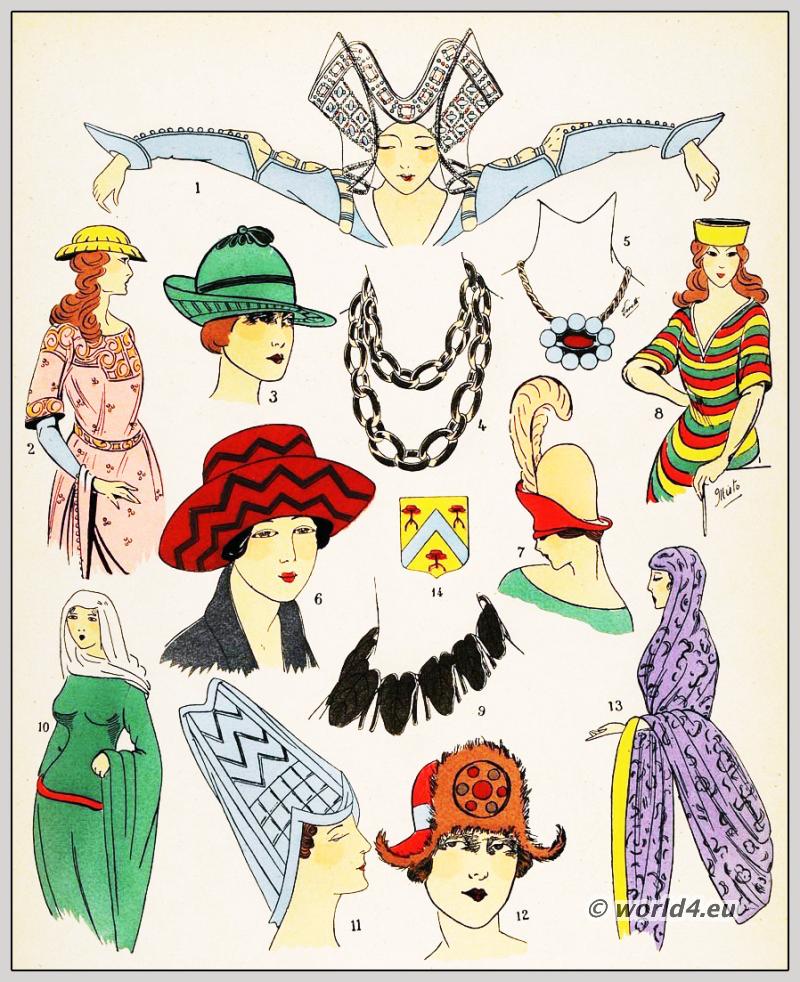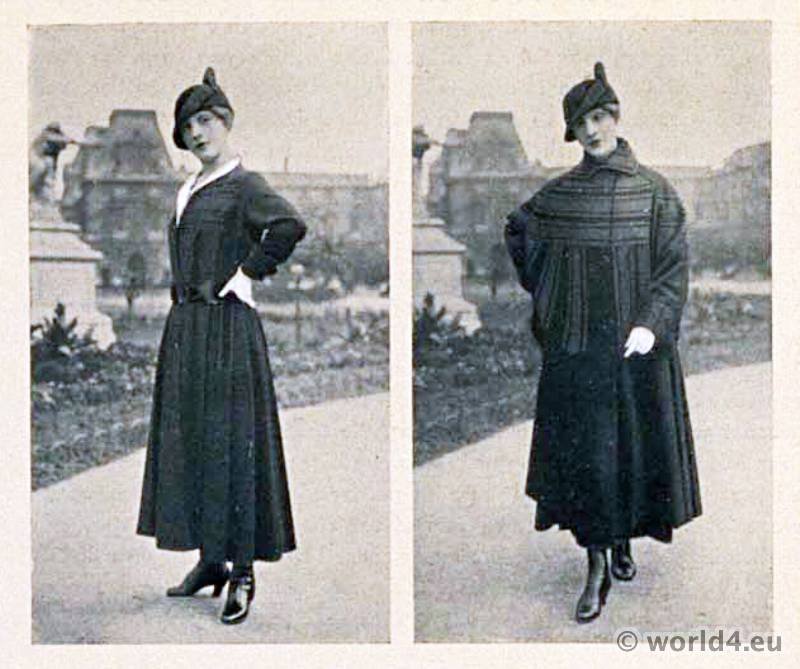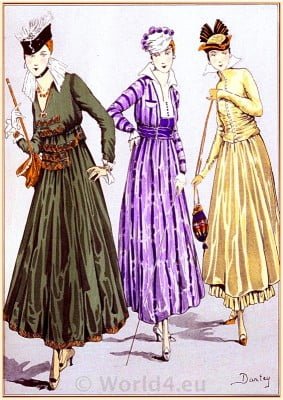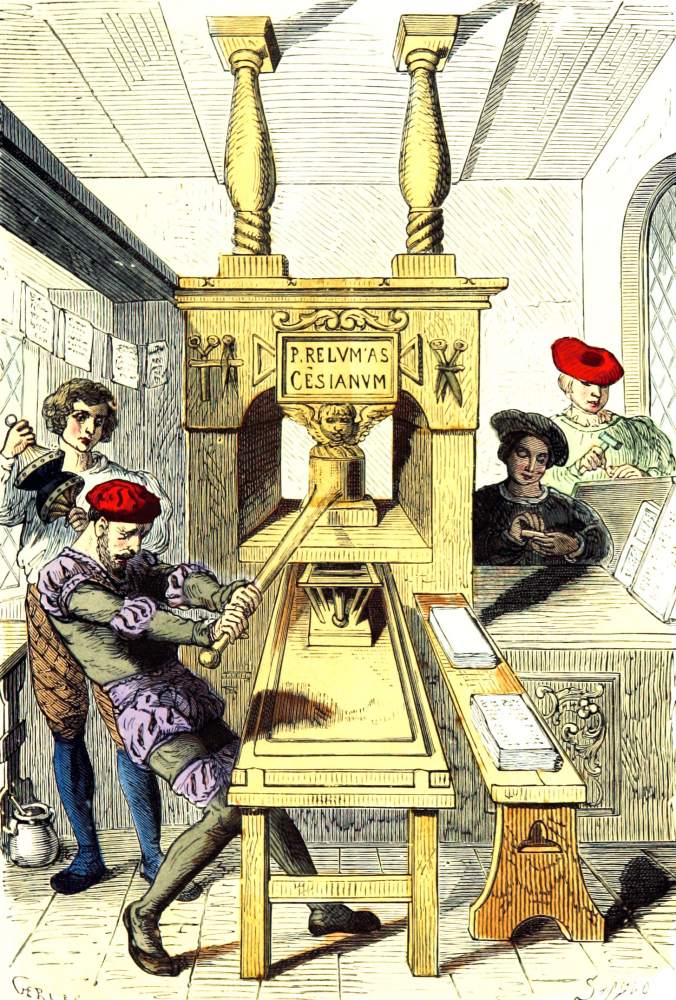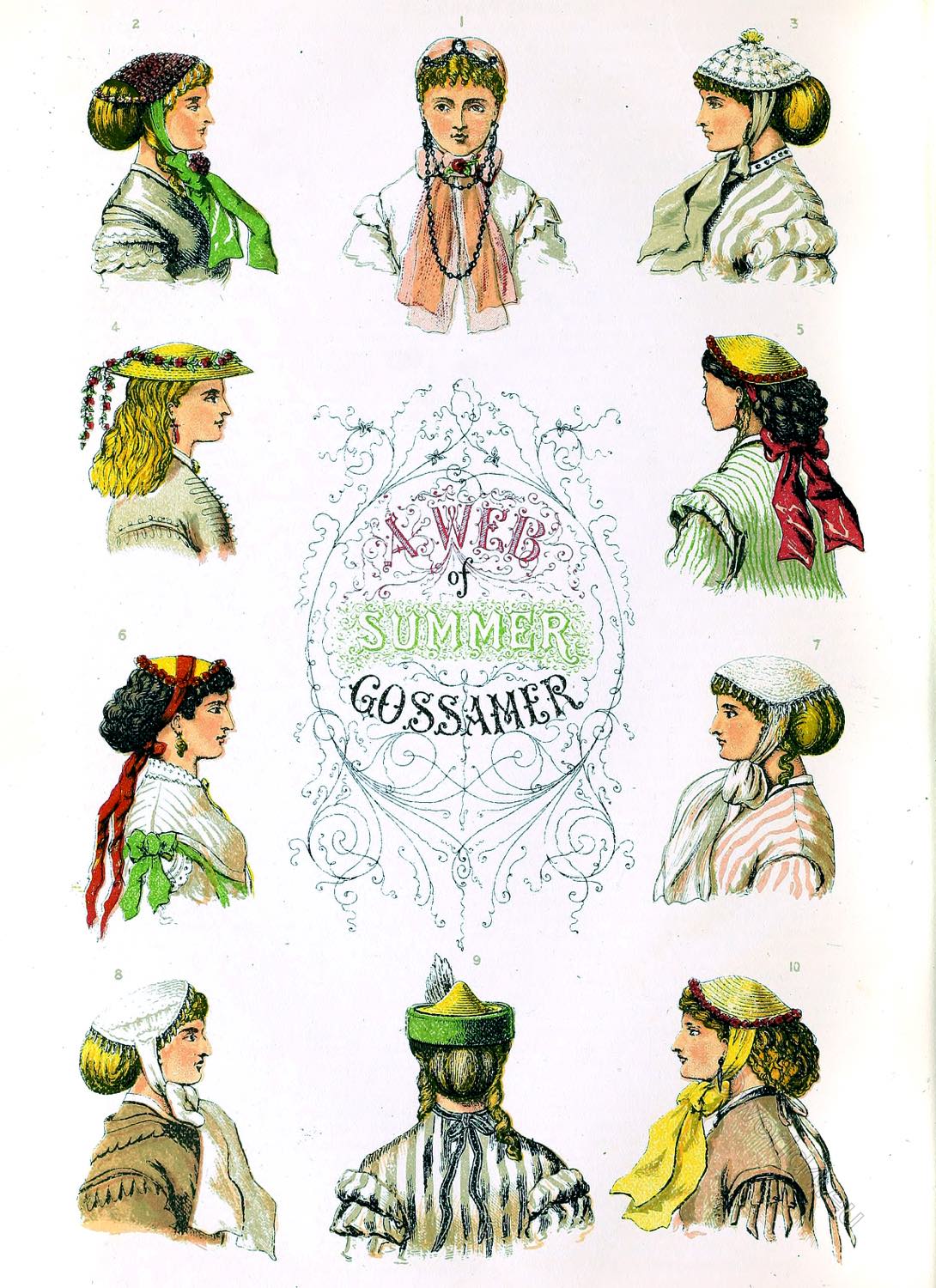
PARISIAN CHAPEAUX.
Parisian chapeaux from the first week of this present flowery month of May, 1867.
My Dear Mr. Editor, — Allow me to offer you for the first number of Nature and Art, a true woman’s contribution, a chapter on Bonnets. They say the men have all lost their heads on the Continent, and that there is no knowing’ what may happen in Germany and Italy. If the ladies have not lost their heads, they have almost ceased to provide bonnets for them, although they do wear certain gossamer fabrics sometimes no bigger than the palm of the hand, to which it is rather daring to give the name of chapeaux. However, no matter what they are called, so long as they look pretty.
I send you ten portraits, both lady and chapeau, in some instances from the life; but you must excuse my telling you which of the faces are real, and which imaginary. It is enough, I think, to assure you that all my sketches are those of real chapeaux that I have seen on the racecourse, in the Bois de Boulogne, in the Champs-Elysées, and other promenades during the first week of this present flowery and, I may add, showery month of May.
I do not know exactly what my own dear countrywomen are wearing on their heads just now, but I challenge them to produce ten specimens, except from the secret drawer of their fancy, to outdo those which I have the pleasure of now sending you.
- Fig. 1. Chapeau Benoiton, so named after the heroines of Victorian Sardou’s successful play at the Vaudeville. A pink fanchon formed of bouillons of tulle, ornamented outside with a moss-rose. Inside is placed a torsade of pink velvet with three cameos linked together by a jet chain. The brides are of taffetas, with long barbes of pink tulle, fastened by a rose beneath the chin. A chaine Benoiton in jet is attached to the chapeau just over the ears, and falls in festoons over the brides.
- Fig. 2. A charming capote composed entirely of violets; a chain of the same flowers falls upon the chignon. Green brides with a small bouquet oi; violets on the bow. A fringe of glass drops ornaments the front.
- Fig. 3. The Papillon, a very dashing chapeau. Tiny bouillons of white tulle radiate from the centre, whereon is posed, with its wings outspread, a beautiful yellow butterfly. A wreath of forget-me-nots ornaments the edge of the chapeau, and the bouillons are dotted with these sweet little flowers. The brides are of pale blue taffetas.
- Fig. 4. No. 4 is a pretty Leghorn hat, forme Japonaise, so much à la mode just now. The only ornament is a delicate garland of roses, pompons and leaves.
- Fig. 5.A small chapeau in fancy straw, christened the Pamela. Bound the edge is placed a wreath of small, bright-red poppies, and the brides, instead of being attached in front, pass round under the chignon, and are tied behind.
- Fig. 6. A charming fantasie — which we will call the Berger. Very small, very simple, very becoming to a pretty brunette. A tiny circle in Leghorn, surrounded by a wreath of fairy damask roses. The long cherry ribbon which forms the brides passes over the chapeau and is attached under the hair.
- Fig. 7. A delicious spring chapeau, forme Japonaise, entirely covered with the beautiful lily-of-the-valley, whose sweet, white bells mingle gracefully with the curls of the coiffure. Long barbes of white tulle, tied beneath the chin, make a charming substitute for the everlasting taffetas brides.
- Fig. 8. A delightful composition of guipure and tulle, embroidered with white bugles; a fringe of the same is placed all round the chapeau. The strings are in white satin.
- Fig. 9. The toque Chinoise in Leghorn. The novelty in this hat is the pointed crown, for we have seen the green velvet bordure and seagull’s wing many times before.
- Fig. 10. A grey and white fancy straw capote, edged with a garland of double violets, and attached beneath the chin by straw-ooloured taffetas.
Should my notes on chapeaux be acceptable to your lady readers, I shall be happy to send you from time to time a few other jottings. K. E. F.
Source: Nature and art. London: Day & Son, 1866-1867.


